So, I’ve talked about examples of incidental teaching or naturalistic instruction as well as 5 specific targets that fit with 5 common classroom activities. Today I want to wrap up talking about incidental teaching / naturalistic instruction by addressing how to get all of the staff working on the same targets in the same place (and remembering to facilitate the skills in the midst of everything else we have to do). There are four different ways that I use to help assure that everyone knows what to address in each area of the room so I want to share those with you today.
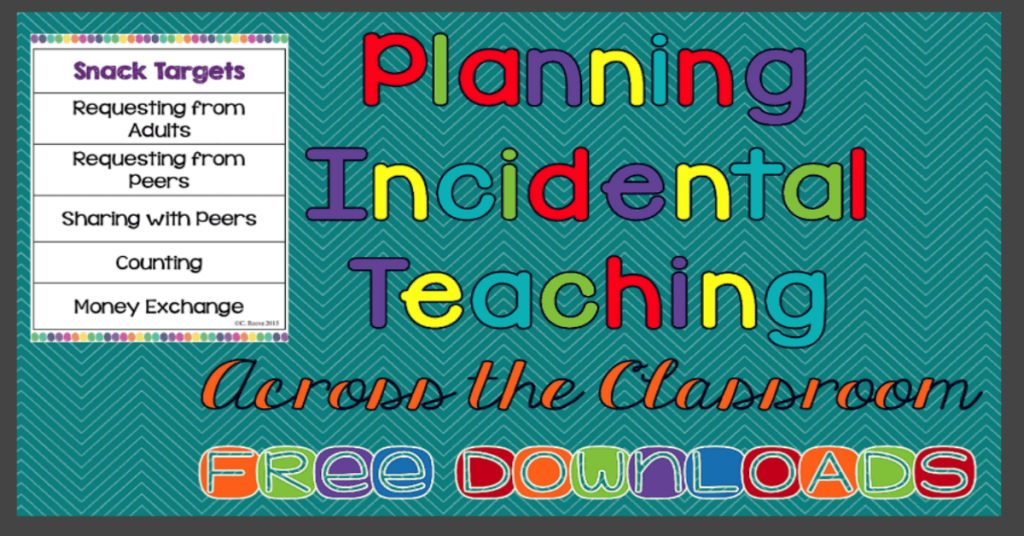
Zoning Plans
The first step I always use to help the staff in the classroom know what needs to be done and taught and where is the staff zoning plan. I’ve written about zoning plans frequently and you can a post with links to them here as well as get a link to download a free form for creating your own.
Essentially a zoning plan is a schedule for staff but with much more detail. For instance, I like to include reminders to staff within them. Examples include who takes the walkie-talkie when we leave the classroom and which students need facilitation during a group activity.
Lesson Plans
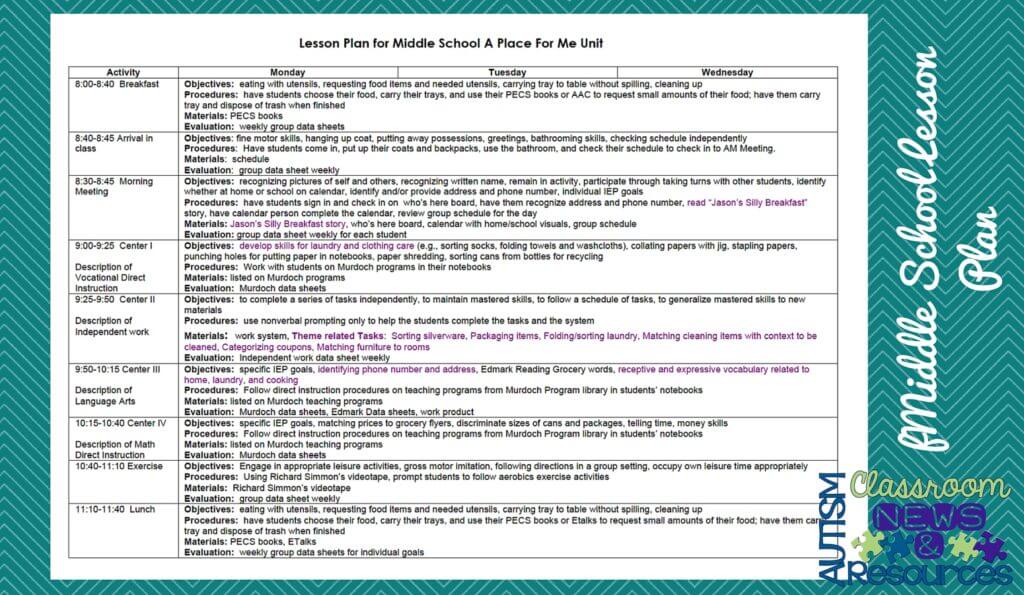
Don’t Freak Out! Please understand that my lesson plans are pretty detailed. However, once you complete them and get them set up, there is limited amount that actually has to change from week to week.
You can see that they are set up by the schedule. Each activity has Objectives, Procedures, Materials, and Evaluation. This allows a space to talk about the targets that are being taught for the activity in general.
It also lets staff know how to complete the activity, what materials to have ready and what data needs to be collected. Generally the objectives of an activity don’t change much over time and some activities have fixed activities (like the morning meeting routine).
The picture above is for middle school. The colored text is the items that would change over time. The rest of the black text stays the same throughout most of the year. Below, on the preschool example, the highlighted text shows the elements that would change over time. If you are looking for more ideas for lesson plans, come join us in the Special Educator Academy where we have a whole workshop on lesson planning and tons more! Get your free 7-day trial here.
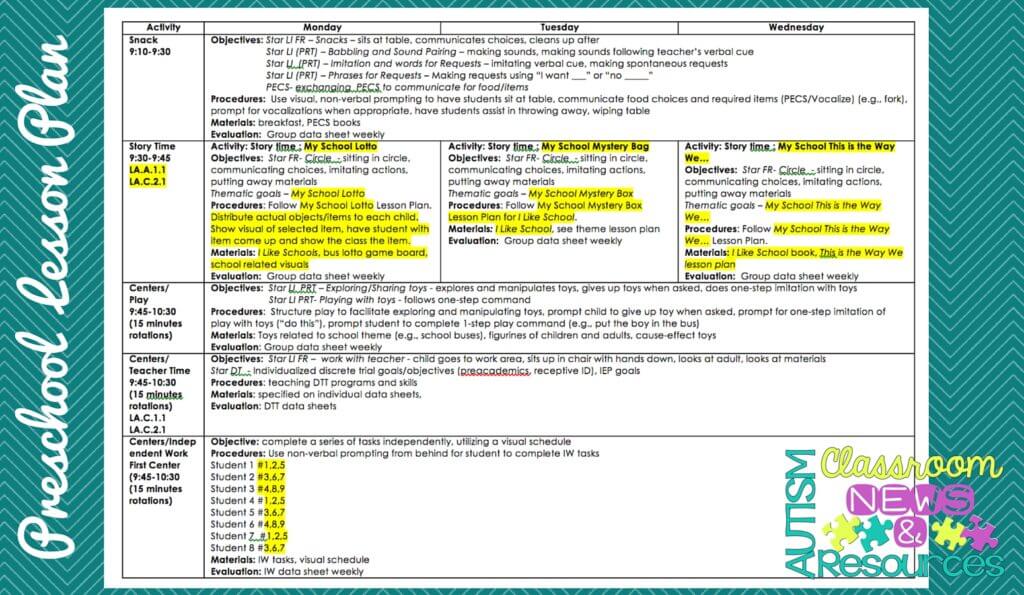
You can grab the lesson plans down at the bottom of this post to use as examples and templates for your classroom. They are a great way to share with staff the targeted naturalistic instruction items for specific activities.
Data Sheets

I also use data sheets to help staff remember what skills to teach in each activity. The group data sheet that I’ve shared here in the past is a good example of that in that it lists all the students and the targeted skills. You can read more about this data sheet and download a free one here.
Visual Cues
And finally, you know how much I like visual cues as reminders for adults as well as students…and if you don’t know you can read about it here. I like to tape these on the table or somewhere in the area for each activity as a reminder. I made them in the same format as my Visual Reminders for Special Education Staff that is available in my store. That product also has blanks if you want to make your own with the same template. Grab the free ones from the resource library below.
So those are 4 ways that I set up the classroom to assure that everyone is on the same page. Grab your free target cards and lesson plans from the resource library below.
JOIN THE FREE RESOURCE LIBRARY FOR REGULAR FREE RESOURCES AND TIPS TO MAKE YOUR JOB EASIER
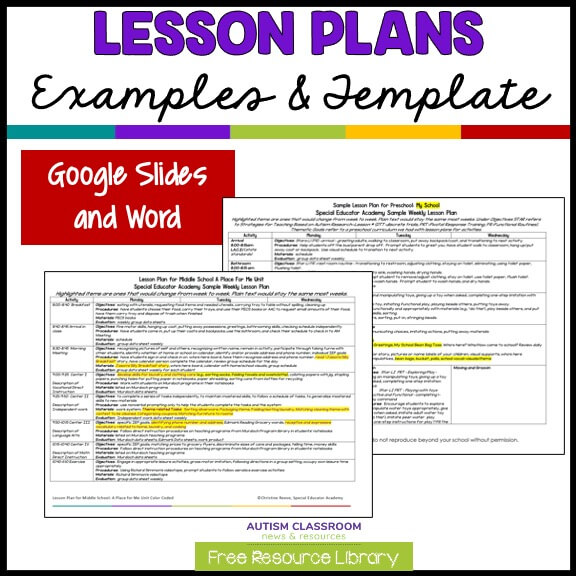
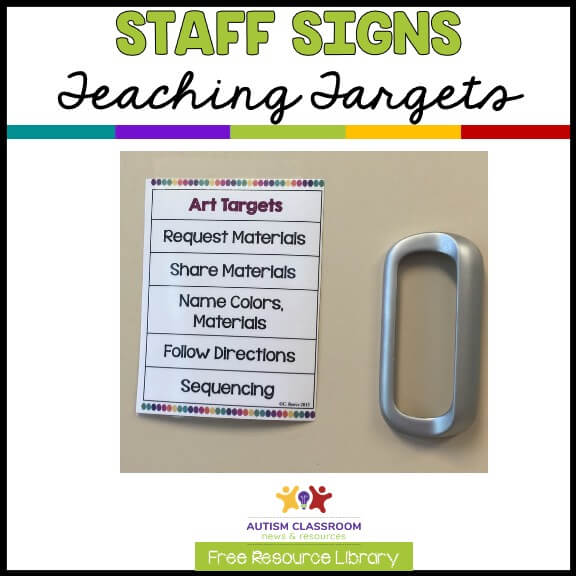
a

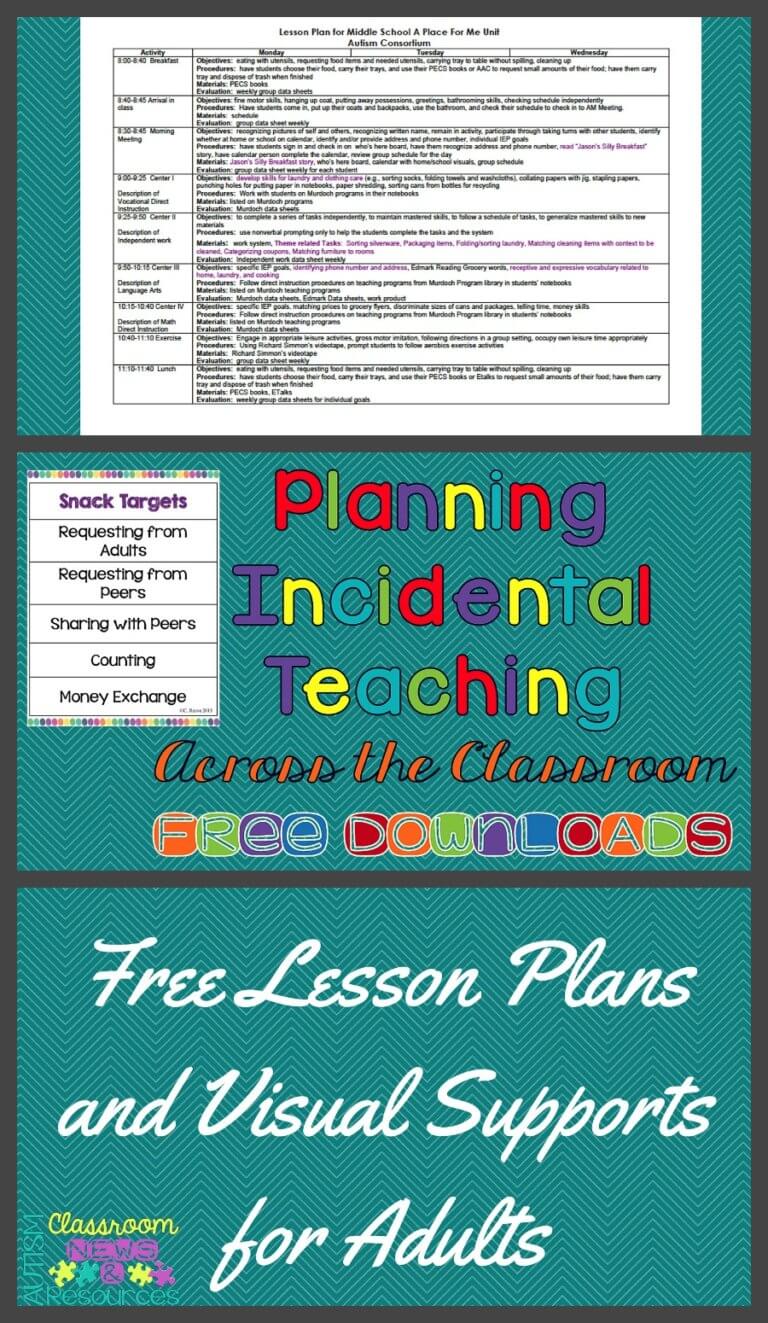
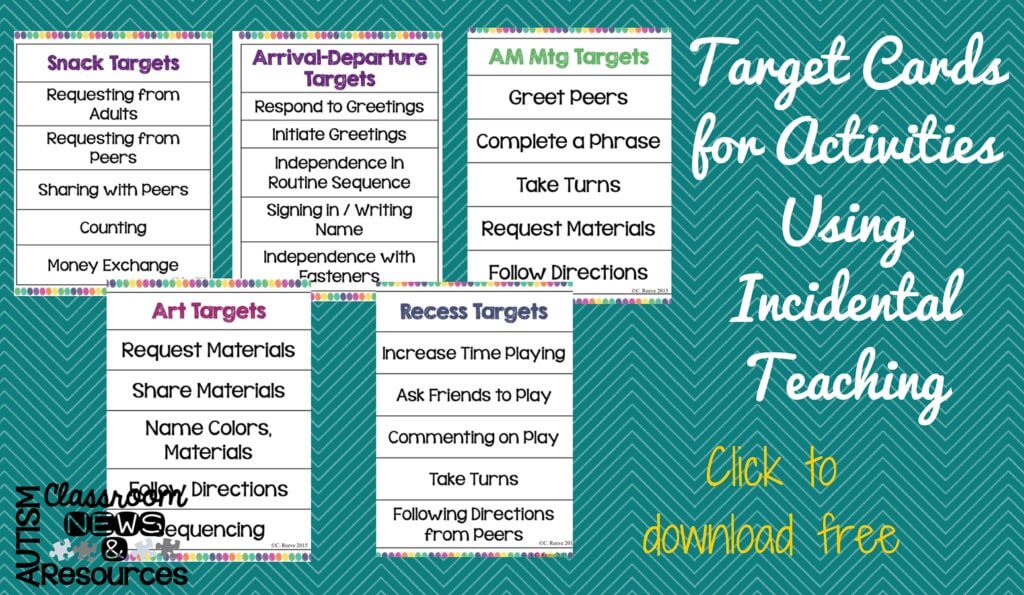


![Summer resources to help survive the end of the year in special education [picture-interactive books with summer themes]](https://autismclassroomresources.com/wp-content/uploads/2018/05/SUMMER-RESOURCES-ROUNDUP-FEATURE-8528-768x768.jpg)

